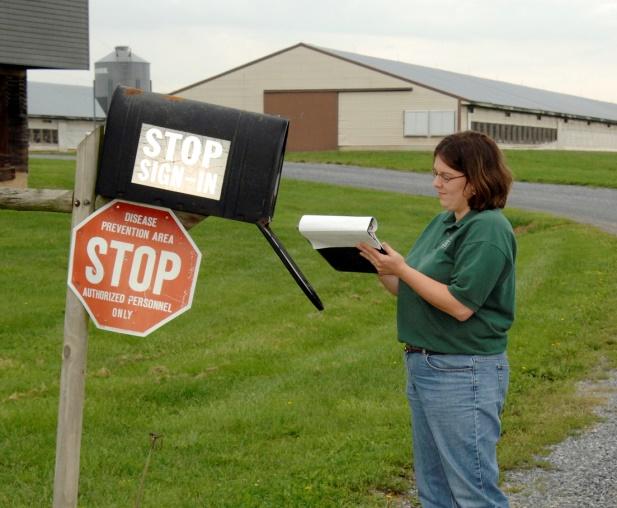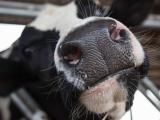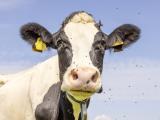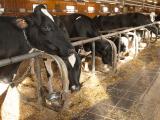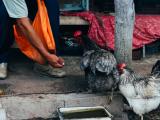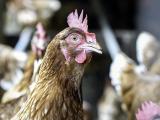The US Department of Agriculture's (USDA's) initial studies of how the H5N2 highly pathogenic avian influenza (HPAI) virus invades poultry farms point to no one clear factor but suggest that the explanation probably includes biosecurity gaps and possibly airborne transmission, the agency announced today.
The USDA's Animal and Plant Health Inspection Service (APHIS) "cannot . . . associate HPAI transmission with one factor or group of factors in a statistically significant way at this time, and will continue to update this report regularly as more analyses are completed," the agency said in a statement.
The USDA's first epidemiologic report on the H5N2 situation reiterates the agency's view that wild birds introduced H5N2 and H5N8 avian flu into commercial poultry originally, but says it is apparently spreading in other ways as well, given the number and proximity of farms affected.
"For instance, the report provides evidence that a certain cluster of farms was affected by identical viruses, pointing to possible transmission among those farms," the statement said. "In addition, genetic analyses of the HPAI viruses suggest that independent introductions as well as transmission between farms were occurring in several States concurrently."
The report says informal observations point to biosecurity lapses as a likely contributor to transmission. It also describes air sampling and wind studies that suggest a possible role for airborne spread of the virus.
Four types of studies included
The 38-page report includes findings from questionnaires completed by operators of 81 turkey farms in five states, comparisons of wind direction and speeds with outbreak patterns, air sampling studies conducted at six farms, and an analysis of virus isolates.
The report does not include any systematic study of biosecurity practices, but it says that biosecurity lapses are "a likely cause of some virus transmission."
"For example, APHIS has observed sharing of equipment between an infected and noninfected farm, employees moving between infected and noninfected farms, lack of cleaning and disinfection of vehicles moving between farms, and reports of rodents or small wild birds inside poultry houses," it states. "We are compiling these observations and will present our findings in a subsequent update of this report."
The document gives little clue how common or widespread such lapses are, but the questionnaire responses show that wild birds have been seen inside poultry barns on 25% of the farms.
The survey part of the study includes findings from infected turkey farms in Iowa (2), Minnesota (67), North Dakota (2), South Dakota (6), and Wisconsin (4). The survey's aim was to gather descriptive information that could generate hypotheses about "disease predilection."
The report says investigators were asked to complete a survey for at least one non-infected farm located near each infected one, but the numbers of both were too small to allow for a statistical comparison.
Air sampling results
In May a University of Minnesota researcher who works with the USDA said she and her colleagues found H5N2 virus material in air samples taken inside and outside infected poultry barns, suggesting that the virus may be able to spread through the air. The USDA report provides more details on those findings.
Investigators took air samples at three Minnesota turkey farms and three layer flocks in Iowa and Nebraska, the report explains. Samples were collected inside affected barns, immediately outside, and at sites ranging from 70 to 1,000 meters downwind from them.
Close to half (46%) of the indoor samples contained H5N2 virus material, as did 23% of the immediate outside samples, but only 2% of the more distant locations yielded positive samples. At least one air sample tested positive for 5 of the 6 flocks included.
In addition to air samples, the researchers also collected samples from surfaces directly exposed to air exhausted from two of the layer chicken barns. At one of the sites, 63% of the samples tested positive, and at the other, 45% had "suspect" results.
The findings of viral material don't necessarily mean viable virus particles were present. But the researchers did isolate viable H5 virus from one air sample collected inside a turkey barn, and results from the layer farms are still pending, the report says.
"The limited detection of viable virus does not necessarily indicate that the virus was not viable since the sampling process could contribute to the inactivation of the virus," the report states.
"The implications of these findings in terms of understanding the transmission of HPAI between flocks need further investigation and we hypothesize that both the transport of airborne particles and the deposition of infectious airborne particles on the surfaces around infected premises represents a risk for the spread of HPAI to other locations," it says.
Wind-related findings
USDA investigators used two ways to look into the possible role of wind in spreading H5N2: by comparing wind direction and farm locations in a cluster of Minnesota outbreaks, and by assessing outbreaks that followed periods of high winds.
In a geospatial analysis, researchers charted general wind directions in four adjacent Minnesota counties between Mar 23 and Apr 2 and charted the direction in which outbreaks spread during that time.
Although the methods used were very limited, they showed very little alignment between wind direction and the direction of avian flu transmission, the report says. Winds, while highly variable, blew predominantly from the west-northwest, whereas outbreaks generally spread from northeast to southwest.
On the other hand, investigators did see some signs that high winds could help spread H5N2, according to the report. On the basis of veterinarians' observation in Minnesota, "sustained high wind speeds over two days appeared to be related to clusters of outbreaks 5-7 days later."
For example, the first periods of sustained high winds of the season came around Mar 22, and the first batch of avian flu investigations followed on Mar 29 and Apr 1, the agency said. A second spell of high winds occurred around Apr 5, and it was followed by a large number of outbreak investigations about Apr 12.
The report cautions that the findings represent only a visual comparison, not a statistical analysis, and are based on data from just three weather stations. A more rigorous analysis is ongoing.
APHIS said its ongoing efforts to share avian flu information with state and industry partners include an animal health meeting in July that will focus specifically on biosecurity.
See also:
Jun 15 USDA announcement
Jun 15 USDA report
May 8 CIDRAP News story on air sampling findings
